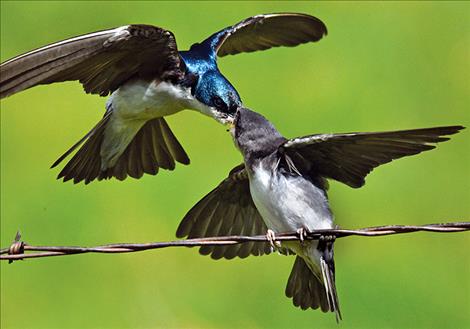Plant a garden for hummingbirds
Hey savvy news reader! Thanks for choosing local.
You are now reading
1 of 3 free articles.
Hummingbirds are native to the Americas. The ones we see here in Montana migrate every season from Mexico and Central America. All species of hummingbirds need to eat often, in fact they consume 100 to 200 percent of their body weight each day, eating bugs and drinking flower nectar. To attract these beautiful birds we can plant species of flowers, trees and shrubs they prefer as nectar sources. A hummingbird garden can be high or low maintenance, depending on your design choice.
In planning a garden for hummingbirds, you might want to place the garden where you can see it and enjoy the color and activity. A garden in sun has many choices of plant material, but several nectar- bearing plants grow in shade; so you should be able to make this kind of a garden almost anywhere. Even a containerized garden will attract hummingbirds. Wild, or native plants are always a good choice, as they tend to hold the most nectar.
A bird bath or a water mister is important for hummingbirds, for drinking and bathing. Be sure to empty and replace the water in a bird feeder at least every other day to prevent bacterial growth and the development of mosquito larvae.
A feeder will provide a nectar source during periods of little or no bloom. The recommended recipe for nectar is 25 percent white sugar to 75 percent water. Food coloring is not needed, and do not use raw or brown sugar as it contains iron, which can be harmful to hummingbirds if consumed in steady and frequent quantities. Hummingbirds leave and travel south when day length shortens, so you do not have to worry about when to stop feeding them.
If trees are in or near your garden they will provide nesting sites, and shrubs provide cover. Trees may also provide nesting materials, such as lichen and spider webs. Two kinds of trees hummingbirds use for nesting and nesting materials are willows and tall conifers. Blooming fruit trees are an excellent nectar source, too. Nectar-rich vines include Campsis radicans (trumpet vine), Convovulus (morning glory) and Lonicera (honeysuckle).
Hummingbirds prefer red, orange, or yellow flowers with a tubular shape, such as honeysuckle blooms, one of their favorites. Some shrubs we can grow in Western Montana that provide nectar are Syringa (lilac), Buddleia (butterfly bush), Lavandula (lavender), and Weigela.
Native perennials that offer nectar include: Aquilegia (columbine), Asclepias tuberosa (butterfly weed), Aster, Clarkia, Liatris, Lupinus (lupine), Heuchera (coral bells), Monarda (bee balm), Penstemon, Phlox and Salvia.
There are several other, introduced perennials that attract hummingbirds: Alcea rosea (hollyhock), Delphinium, Dianthus (carnations and pinks), Digitalis (foxglove), Hemerocallis (daylily), Paeonia (peony) and Veronica.
Annual flowers give the summer-long bloom we want to attract hummingbirds. Some of their favorites are: Calabrachoa, Cleome, Cosmos, Impatiens, Nasturtium, Nicotiana (flowering tobacco), Petunias and Zinnias.

















